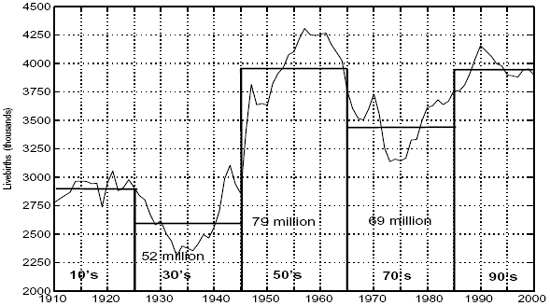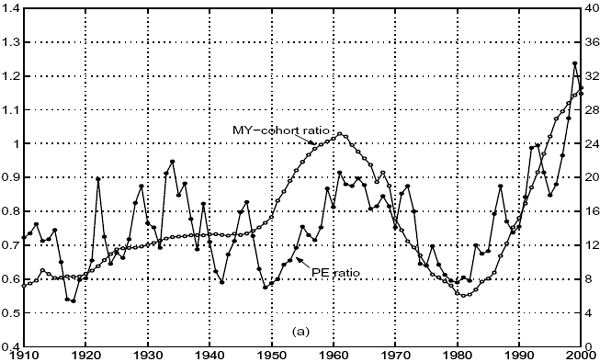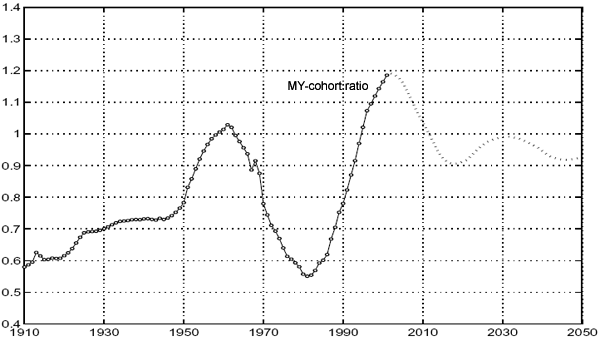We have selected for retrospective review a few all-time “best selling” research papers of the past few years from the General Financial Markets category of the Social Science Research Network. Here we summarize the August 2002 paper entitled “Demography and the Long-Run Predictability of the Stock Market” by John Geanakoplos, Michael Magill and Martine Quinzii (download count over 4,400). In this paper, the authors link cyclic demographic behavior (borrowing when young, investing for retirement in middle age and disinvesting in retirement) with stock market price-earnings ratio (P/E) cycles. Using the overlapping generations model, they conclude that:
- Changes in demographic structure, and therefore supply of and demand for financial instruments, induce significant changes in both bond and equity prices on a 40-year cycle.
- Members of small (large) cohorts face favorable (unfavorable) terms in financial markets throughout their life, with resultant greater (lesser) lifetime consumption. The smaller the cohort, the greater its financial advantage.
- This analysis offers an explanation of the Internet stock market bubble based on demography (high demand for stocks by those of middle age investing in equities for retirement).
- A substantial decline in the overall P/E of the U.S. stock market is likely in the next 20 years.
The following chart, extracted from the paper, shows the five demographic cohorts in the U.S. over the 20th century. The vertical axis represents live births in thousands. The authors conclude that those born during valleys (peaks) experience financial tailwinds (headwinds) throughout their lives.

The next chart from the paper depicts the relationship between demographic structure and overall stock market P/E. The key demographic indicator is the ratio of the number of middle-age (M: 40-49) people to the number of young (Y: 20-29) people (the MY-cohort ratio) in the U.S. population, including the effects of immigration. The P/E (PE ratio) used is for a Standard and Poors index of U.S. common stocks. A positive correlation is apparent.

This third chart from the paper shows how the MY-cohort ratio falls in coming decades. Hence, the authors predict a corresponding decline in overall stock market P/E through 2020.

In summary, demographic trends suggest a headwind for U.S. equities over the next 15 years. Baby Boomers may drive P/Es down as they sell to fund retirement.